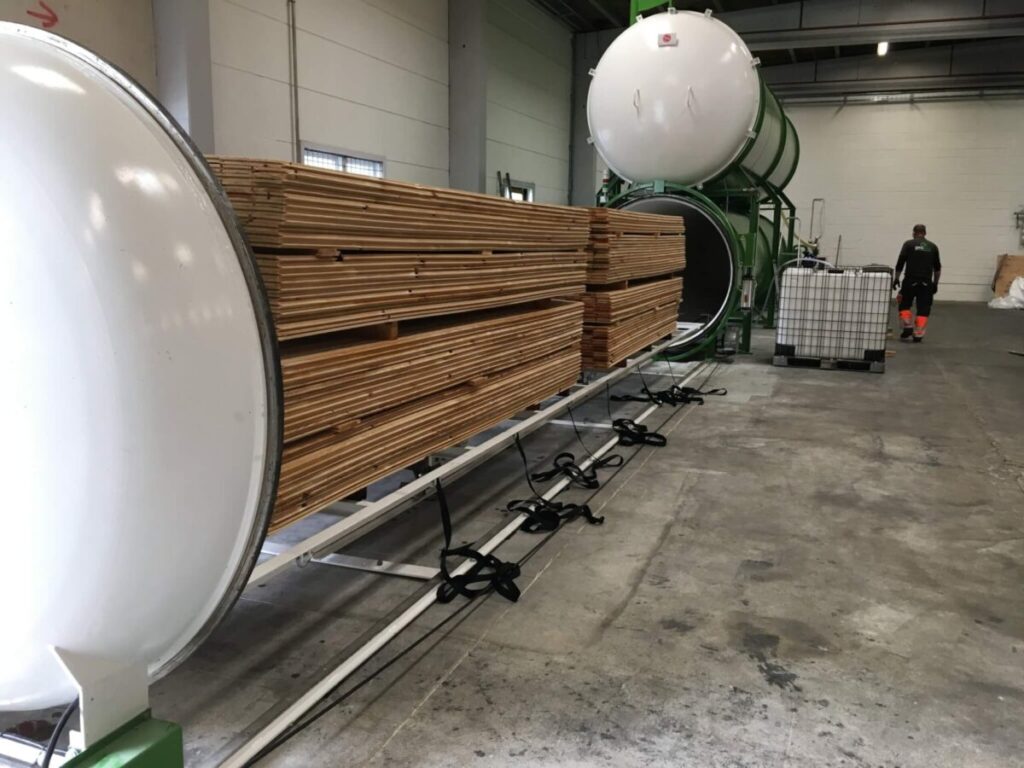Euroclass D fire rating
Timber behaves very predictably in fire situations, and there are well established parameters for its use in building construction. The fire performance of non-fire treated wood panelling can be defined under the established CWFT rules (Classification Without Further Testing), set out in EN14915.

The reaction to fire performance of solid wood depends on the type of wood, its density, thickness, arrangement and installation.
A Euroclass D rating can be achieved under CWFT rules where the following conditions are met.
- Profiles are of nominal thickness ≥ 18mm
- Species density is over 390kg/m³
- Back wall/substrate is A1/A2 fire rating and minimum density 10kg/m³
- Where the cavity is non ventilated with a depth <20mm or no airgap (eg internal wall panelling), a Euroclass D- s2, d0 substrate may be used.
- The cladding arrangement is of closed jointed type*
(*Open jointed arrangements may be classified as D-s2,d0 under CWFT rules in certain specific arrangements, see EN-14915)
Where timber frame buildings are concerned, and if not already included within a SIPS panel system, a suitable sheathing board should be used to cover insulation (eg exterior Gyproc), to give an appropriate fire resistance rating where required.

- Insulation material / other wall build up arrangement
- A1 / A2 sheathing board
- Ventilated cavity with the batten system
- Cladding boards
The information on this page is for reference only. Please consult with Building Control for advice on your project.

Fire performance classes
Reaction to fire performance of timber cladding is defined under EN 13501-1. Find out which class you need.
Learn more
Burnblock® fire retardant treatment
Burnblock® is a 100% biodegradable and natural, market leading fire retardant solution.
Learn more
Fire retardant treatment process
Russwood work with experienced specialist Burnblock® applicators, to provide our timber cladding with the fire classification required.
Learn more
Euroclass B or C fire rating
Under Euroclass B or C rating, it is necessary to treat the timber with a flame retardant.
Learn more